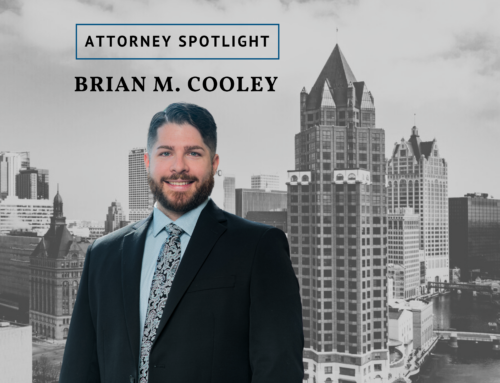Choice of Entity Corner
Introduction
The benefits and efficiencies of Subchapter S status for an active trade or business are well known—but so are its limitations. Among these are the lack of flexibility presented by the “single class of stock” restriction and the general prohibition on having other for-profit entities as shareholders. Both of these can present obstacles when an outside investor is looking to acquire a stake in an operating entity that is currently conducted in the S corporation form, and still desires to operate in a “passthrough” form. These obstacles can be made even more difficult where certain features of the operating entity cannot be readily assigned in an asset deal (e.g., licenses, certifications, contracts), or (as is often the case with businesses in the professional medical service industry) where preservation of the operating entity’s existing EIN is a significant consideration.
In these cases, the use of a “drop down” or “inversion” transaction may provide a significant measure of flexibility whereby the S corporation operating entity can reorganize itself into a new form that would permit the outside investment, without disrupting existing intangibles (including the EIN)—while still allowing the existing shareholders to defer gain on the ownership stake that they retain.
Summary of Transaction
Step 1: The shareholders of Operating Entity (S Corp) create NewCo as a state business entity that meets the requirements for qualification as a small business corporation. The shareholders then contribute all of their stock in Operating Entity (S Corp) to NewCo and promptly elect QSub status for Operating Entity. (See Figure 1)
This initial step would appear to qualify as an “F” reorganization and further results in the original S election carrying over to the new parent corporation (NewCo)—a position that is supported by CCA 2009410191:
A parent corporation needs to have an effective S election in place in order to make a QSub election for a subsidiary. In a reorganization pursuant to section 338(a)(1)(F) (an F reorg), an S election will carry over to the new parent corporation. However, when an S corporation undergoes a reorganization whereby the S corporation becomes a qualified S subsidiary (QSub) of a new holding company, the reorganization will qualify as an F reorg, and the S election will carry over to the new holding company, only if a QSub election is made for the old S corporation effective immediately following the transaction. (Emphasis added.)
The CCA goes on to cite Rev. Rul. 2008-182 as providing that the original EIN of the “old S corporation” will remain effective for that entity in its new QSub form and shall be used any time that the QSub is otherwise treated as a separate entity for federal tax purposes (including for employment and certain excise taxes)—or if the QSub election terminates. It is NewCo that must apply for the new EIN.
This would seem to take the parties where they need to be in terms of their first objective: isolating the “target” business operations inside of a DRE that retains its original EIN and doing so in a nontaxable manner.
Step 2: Operating Entity (QSub) is “converted” into a single-member LLC (SMLLC) by way of a state law formless conversion statute. (See Figure 2)
The conversion of Operating Entity (QSub) into an SMLLC in these circumstances should be a nonevent, as one might expect, but the basis for this conclusion is somewhat more subtle than simply observing that Operating Entity is merely moving from one form of disregarded entity (DRE) to another.
In the ordinary course, such a conversion would be treated as a liquidation, and Code Sec. 332 would apply. But in this case, NewCo is treated as owning the assets and business of Operating Entity—both before and after the conversion.
Mechanically, the QSub election terminates automatically upon the conversion.3 Generally, such a termination would result in C corporation status for the terminating QSub—unless a different treatment would result in thecontext of a larger transaction under “general principles of
tax law,” including the step-transaction doctrine.4
Example 2 of Reg. §1.1361-5(b)(3) deals with a circumstance in which, as part of a plan to sell a portion of the assets of a QSub, the parent S corporation (“X”) causes the QSub (“Y”) to merge into a LLC (“T”), which is wholly owned by X and is a DRE—at which point X then sells 21 percent of the interests in the LLC to an unrelated corporation (“Z”). The commentary in the regulation provides:
The merger of Y into T causes a termination of Y’s QSub election. The new corporation (NewCo) that is formed as a result of the termination is immediately merged into T, an entity that is disregarded for Federal tax purposes. Because, at the end of the series of transactions, the assets continue to be held by X for Federal tax purposes, under step transaction principles, the formation of NewCo and the transfer of assets pursuant to the merger of NewCo into T are disregarded. (Emphasis added.)
There is no principled reason to distinguish between a merger into an LLC and a conversion into an LLC in this setting. Thus, the same result should obtain where the QSub simply converts to an LLC and sells units.
Step 3: Investor purchases membership interests of Operating Entity (LLC) from NewCo. (See Figure 3)
Such a sale essentially reprises the facts of situation 1 of Rev. Rul. 99-5.5 Investor’s purchase of a membership interest in the LLC should be treated as the purchase of a proportional interest in each of Operating Entity LLC’s assets.
Here again, Example 2 of Reg. §1.1361- 5(b)(3) (discussed above) is instructive. It is observed that subsequent sale of 21 percent of T is treated as a sale of a 21-percent undivided interest in each of T’s assets, and, immediately thereafter, X and Z are treated as contributing their respective interests in those assets to a partnership in exchange for ownership interests in the partnership.6 However, the commentary continues:
Under section 1001, X recognizes gain or loss from the deemed sale of the 21 percent interest in each asset of the limited liability company to Z. Under section 721(a), no gain or loss is recognized by X and Z as a result of the deemed contribution of their respective interests in the assets to the partnership in exchange for ownership interests in the partnership.
While the result in Example 2 of Reg. §1.1361-5(b)(3) does not appear to be inconsistent with that of Rev. Rul. 99-5, it will likely tee up a book-tax difference for NewCo and its shareholders under Code Sec. 704(c)—possibly a significant difference.7
The Effect of “Steps” in the Transaction
Given the somewhat circuitous path taken, one has at least to consider the possibility of whether the series of “steps” comprising the transaction as a whole would, of itself, somehow compromise its qualification as an “F” reorganization. It would appear not.
Since 2005, Reg. §1.368-1(b) has contained language exempting “E” and “F” reorganizations from the requirements of both the continuity of business enterprise and the continuity of interest requirements. At the same time, Reg. §1.368-2(m) came into effect—defining, in considerable detail, what qualifies as an “F” reorganization.
Reg. §§1.368-2(m)(1)(i) through (iv) state the basic requirements of an “F” reorganization. In the “drop down”/“inversion” transaction described herein, Operating Entity (S Corp) is treated as the “transferor corporation” and NewCo is treated as the “resulting corporation.” Thus, the mechanics of these regulations would work as follows:
i. All of the stock of the resulting corporation (NewCo) is distributed in exchange for the stock of the transferor corporation (Operating Entity).
ii. The pre-transaction shareholders of Operating Entity must own all the stock of NewCo in the same proportions.
iii. NewCo must not have any assets or any Code Sec. 381(a) attributes (tax history) before the transaction.
iv. Operating Entity must completely liquidate in the “F” reorganization. (This is deemed to be met by the QSub election and would not be disturbed by the conversion into an LLC.)
v. NewCo must hold all the property held by Operating Entity immediately before the “F” reorganization transactions. (Again, this would be deemed to be met by the QSub election and not harmed by the conversion into an LLC.)
vi. Immediately after the “F” reorganization, NewCo must not own any assets received from any other corporation for which it would have section 381(c) attributes.
Importantly, Reg. §1.368-2(m)(3)(i) makes clear that a series of transactions that result in a “mere change” may result in an “F” reorganization even if they would be separately treated under Subchapter C—for instance, Code Secs. 304(a)(1), 331, 332 or 351.8 This provision solves a problem with the “beginning” and “end” language in Reg. §1.368-2(m)(1) arising in the above steps.
Reg. §1.368-2(m)(1) acknowledges that an “F” reorganization can be a series of steps, which begins with the transfer by transferor to the resulting corporation and ends when the transferor corporation is liquidated. In the “inverted” circumstances of the transaction described herein, the steps reverse the order of discussion in that sentence—providing for the movement of stock in the resulting corporation before the transfer of assets by the transferring corporation. Fortunately, the language of Reg. §1.368-2(m)(3)(i) makes clear that the order does not control.9
Moreover, Reg. §1.368-2(m)(3)(ii) is pointed on the notion that an “F” reorganization is not compromised by virtue of having occurred before, within or after a series of transactions that effect more than a “mere change.” The distinction between subsections (3)(i) and (3)(ii) is notable: Subsection (i) speaks to the steps involved in the “F” reorganization itself, while subsection (ii) speaks to the location of the “F” reorganization in a larger set of transactions.
Effect of Transaction
Starting with the proposition that the reorganization qualifies as an “F” reorganization and that both Operating Entity and NewCo are parties to such reorganization, what, then, are the results to (i) Operating Entity itself, (ii) NewCo and (iii) the Shareholders of NewCo?
A. Operating Entity
- Operating Entity, as a party to the reorganization, should adopt a “plan of reorganization.”10 Also, each party must file the required statement with its return under Reg. §1.368-3(a) for the tax year. However, in a setting such as this—where Operating Entity will become a DRE of NewCo—there would be only one
such statement to file. - Code Sec. 361(a) provides for nonrecognition to Operating Entity, as transferor of its assets in exchange for the stock of NewCo. The exception for “boot” set forth in Code Sec. 361(b) should not be applicable so long as the only possible “boot” is liability assumption—as Code Sec. 357(a) negates that, except where there is a tainted tax avoidance purpose (Code Sec. 357(b)) or liabilities in excess of basis (Code Sec. 357(c)). In any event, the IRS previously ruled that Code Sec. 357(c) does not apply to an “F” reorganization because it is “… nothing more than a mere change in identity, form or place of organization and the recognition of gain on such transactions is not intended by section 357(c).”11 Finally, in this setting, there would be no recognition under Code Sec. 361(c) (as there is no property distributed other than qualified property, i.e., stock of NewCo) and, as an “F” reorganization, there is no recapture.12
- The basis of the stock received by Operating Entity is determined under Code Sec. 358 as equal to its basis in the transferred property, decreased by money or other property received in the exchange (here zero) and gain recognized in the exchange (again zero). However, this is largely irrelevant because the stock is immediately distributed and picks up a basis in the shareholder’s hands.
B. Shareholders of Operating Entity
- Code Sec. 354(a)(1) provides that no gain or loss is recognized by the stockholders of a party corporation (here, Operating Entity) if, pursuant to a plan of reorganization, stock or securities in another party to the reorganization (NewCo) are distributed to them in exchange for their stock in Operating Entity, the party corporation. Code Sec. 356 should have no application here as there is no additional consideration received.
- No actual exchange is required.13
- The basis that the shareholders will have in the shares of NewCo will be the same as the basis that they had in their Operating Entity stock.14 They will have a holding period that includes the holding period of the exchanged Operating Entity stock, if the Operating Entity shares were a capital asset as to the shareholder receiving the NewCo shares.15
- So long as Operating Entity was an “always S” prior to the reorganization, this will negate any built-in gains tax under Code Sec. 1374.16 Importantly, Code Sec. 1374(d)(8) will not apply to make assets into tainted assets subject to Code Sec. 1374. If Operating Entity has Code Sec. 1374 tainted assets, the taint would carry over, but NewCo’s recognition period would include Operating Entity’s recognition period.17
C. NewCo
- Code Sec. 1032(a) provides that NewCo does not recognize gain upon receipt of assets in exchange for its stock.
- Under Code Sec. 362(b), NewCo obtains a carryover basis from Operating Entity for each of the assets it receives. Under Code Sec. 1223(2), the holding periods for its assets tack from Operating Entity so that those assets include the period they were held by Operating Entity.
- Code Sec. 381 applies to “F” reorganizations in the same manner as other forms of reorganizations.18 Accordingly, NewCo succeeds to all of the items listed in Code Sec. 381(c), and the operating rules of Code Sec. 381(b) do not apply. Moreover, the detailed rules of Code Sec. 381(c) limiting use of attributes would not apply because NewCo will be treated as Operating Entity had been “as if there had been no reorganization.”19
- Code Secs. 382 and 383 should be inapplicable because there is no ownership change.
Final Considerations
In summary, the first two steps of the transaction detailed herein have no federal income tax effect—rather, they simply “prime” Operating Entity for investment by an owner otherwise-ineligible to hold S corporation stock and do so in a manner that avoids disruption to intangibles that might otherwise be immovable and even leaves the existing EIN in place. The third step is simply a deemed sale of an undivided interest in the assets of Operating Entity (now owned by NewCo) to a new owner. In this latter respect, the parties will still have to contend with the same economic considerations that attend the decision to sell assets or stock—chief among these, the prospect of ordinary gain on certain classes of assets (e.g., accounts receivable, inventory, etc.). However, the prospect of a “deemed” asset sale—by virtue of the same of an interest in an SMLLC DRE—at least gives the parties an avenue to “move the immoveable” in an efficient manner.
As straightforward as the transaction described herein may be mechanically, the conceptual underpinnings—which appear counterintuitive at times—have a number of subtleties that merit consideration, as they can be instructive when dealing with knottier situations.20
Endnotes
1 CCA 200941019 (Apr. 9, 2009).
2 Rev. Rul. 2008-18, IRB 2008-13, 674.
3 See Reg. §1.1361-5(a)(1)(iii).
4 See Reg. §1.1361-5(b)(1)(i).
5 Rev. Rul. 99-5, 1999-5 CB 434.
6 See Reg. §1.1361-5(b)(3), at Example 2.
7 NewCo and its shareholders should be able to minimize the potential adverse effects of such a difference by negotiating for the use of the “traditional method” under Reg. §1.704-3(b), which will cause the ceiling rule to apply (viz. “curative” or “remedial” allocations). See Reg. §1.704-3(c) and (d).
8 Here, Code Secs. 351 or 368(a)(1)(B) might apply to the creation of NewCo and the contribution of Operating Entity stock, and Code Sec. 332 might apply to the QSub election treated as a liquidation under Code Sec. 332.
9 See Example 5 in Reg. §1.368-(m)(4), which applies Reg. §1.368-2(m)(3)(i) to a contribution of S1 stock into S2, followed by a merger of S1 into S2.
10 See Reg. §1.368-2(g).
11 See Rev. Rul. 79-289, 1979-2 CB 145.
12 See Code Secs. 1245(b)(3) and 1250(d)(3) (exempting Code Sec. 361 transactions); see also Code Sec. 50(a)(4) and Reg. §1.47-3(e) and (f) (re: investment credit recapture).
13 See Rev. Rul. 56-654, 1956-2 CB 216. As a practical matter, it may be a worthwhile exercise to do an exchange just from a documentation standpoint—given that a sale of an interest in Operating Entity is anticipated and NewCo and its shareholder may need to make representations and warranties of ownership, which will be easier to substantiate where an exchange has actually occurred.
14 See Code Secs. 358(a)(1) and (f).
15 See Code Sec. 1223(1).
16 See Code Sec. 1374(c)(1).
17 See LTR 200320013 (Feb. 4, 2003).
18 See Code Sec. 381(a)(2).
19 See Reg. §1.381(b)-1(a)(2).
20 For a detailed discussion of how some of these same mechanics were applied in a more factually complicated context, see Nelson Toner, S Corporation Corner, The S Corporation, the QSub and the F Reorganization, J. Passthrough Entities, May–June 2010, at 29.
This article is reprinted with the publisher’s permission from the Journal of Passthrough Entities, a bi-monthly journal published by Wolters Kluwer. Copying or distribution without the publisher’s permission is prohibited. To subscribe to the Journal of Passthrough Entities or other Wolters Kluwer Journals please call 800-449-8114 or visit CCHGroup.com. All views expressed in the articles and columns are those of the author and not necessarily those of Wolters Kluwer or any other person. © CCH Incorporated. All Rights Reserved.
© 2016 CCH Incorporated and its affiliates. All rights reserved. Reprinted with permission from the Journal of Passthrough Entities.






